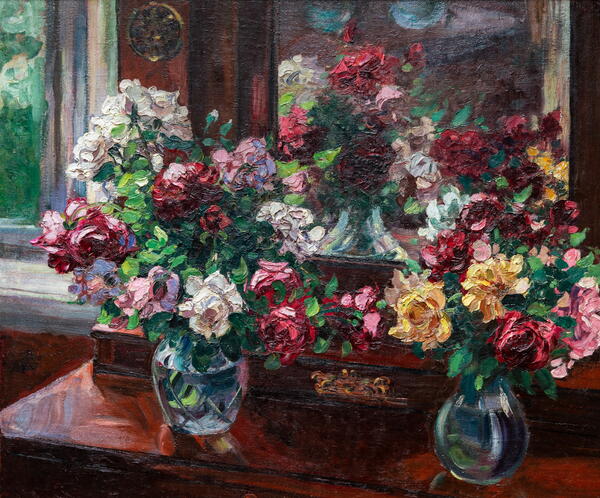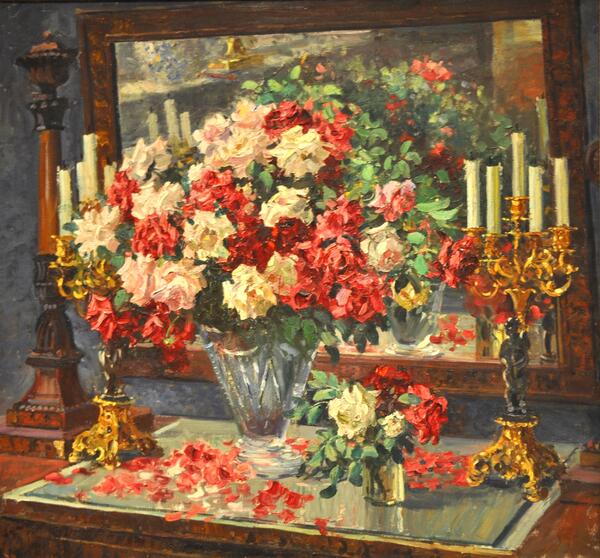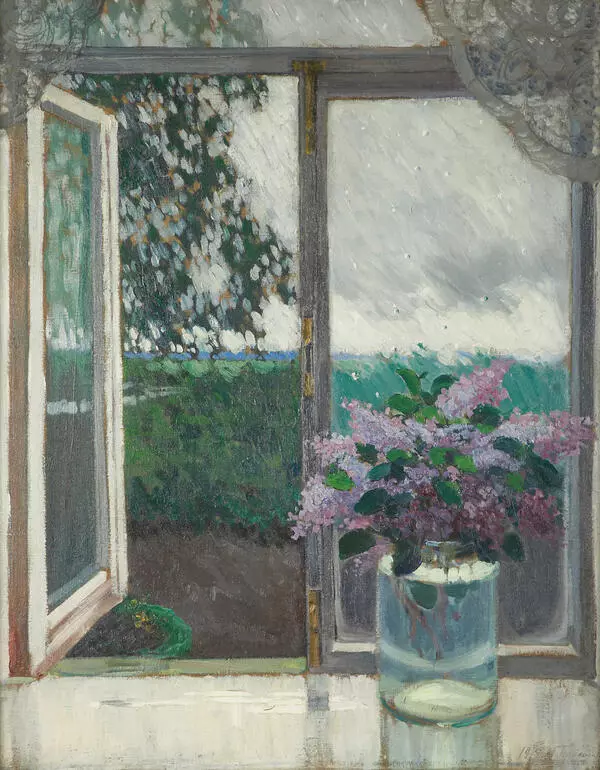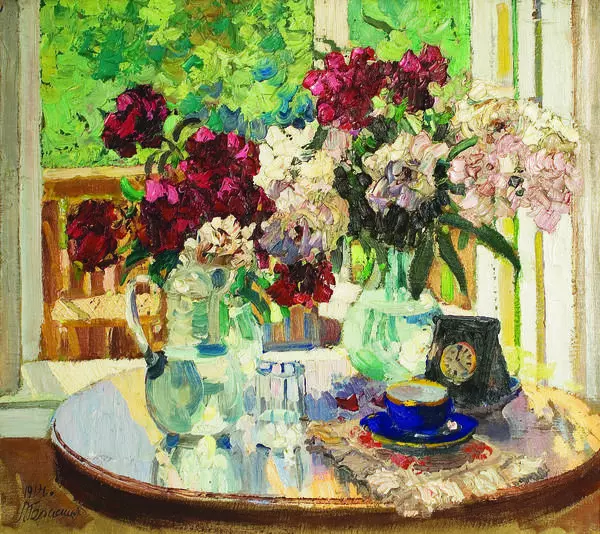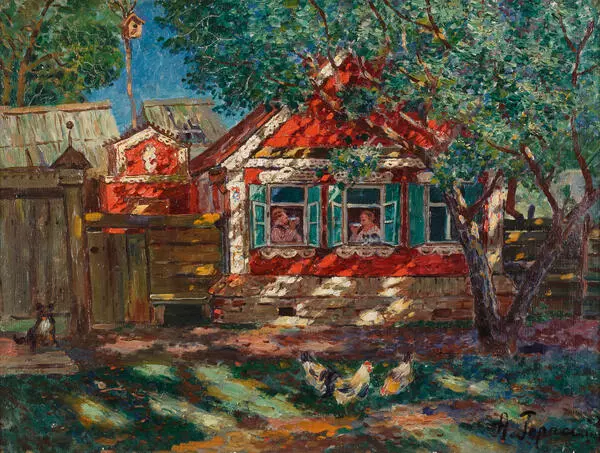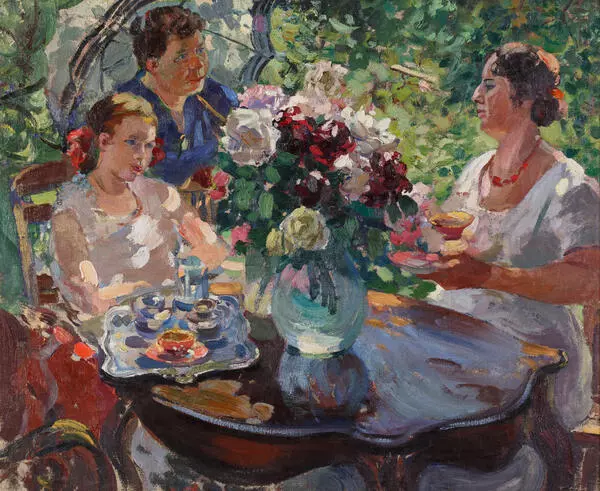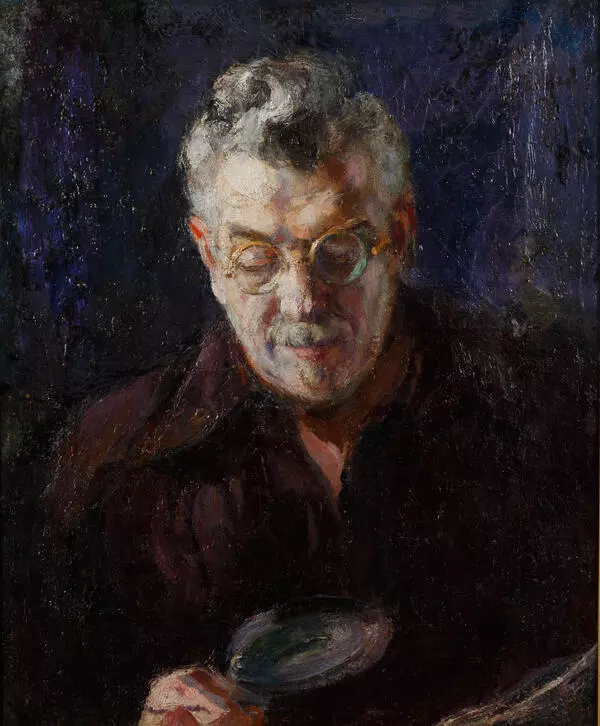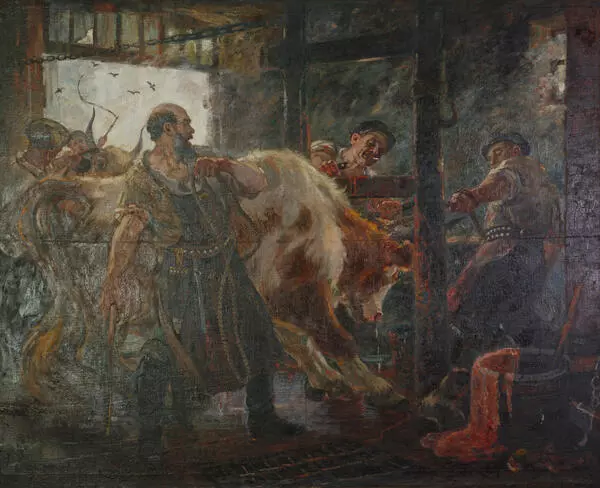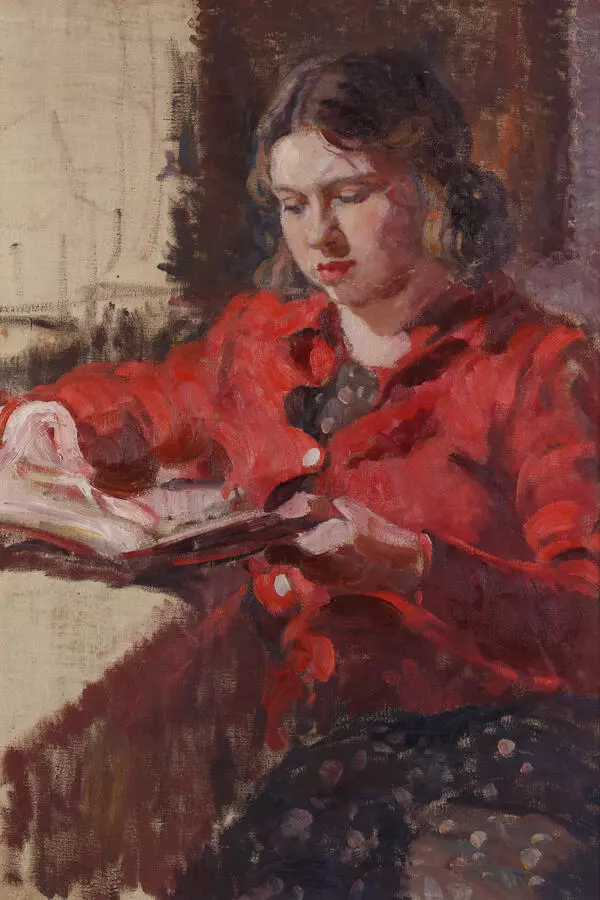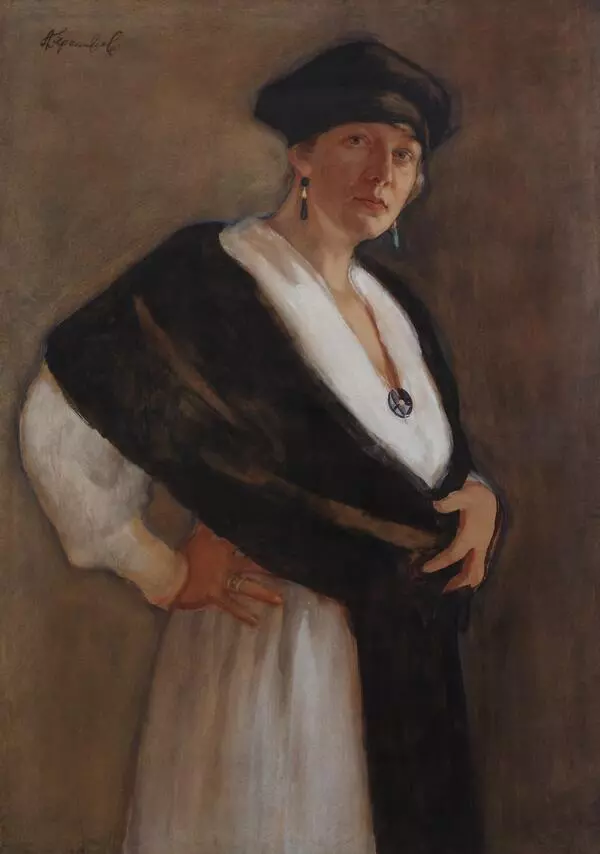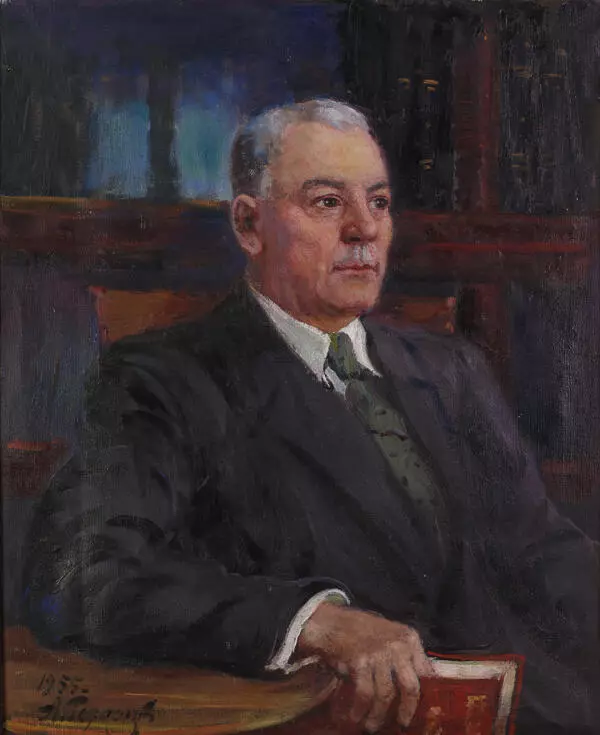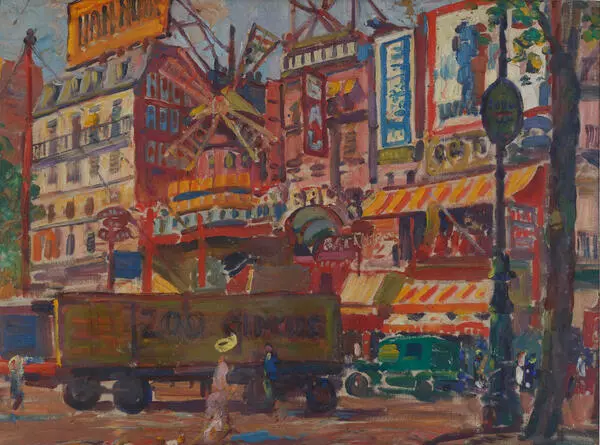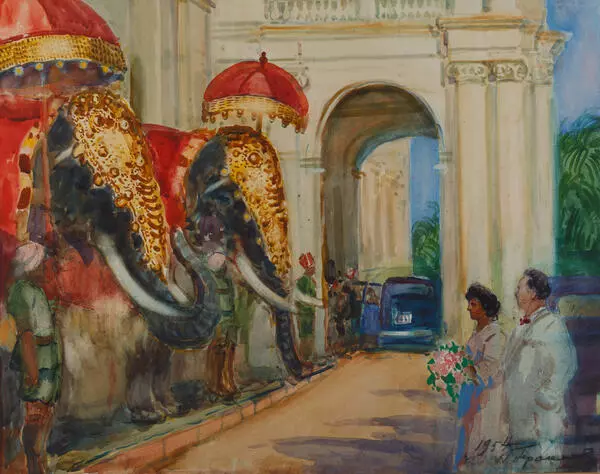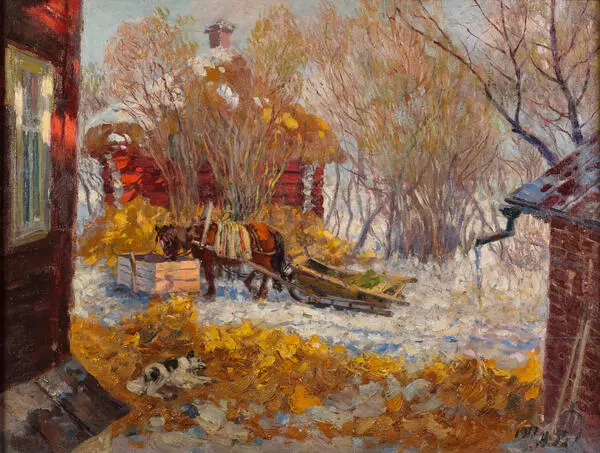Alexander Gerasimov painted still lifes with great love throughout his entire life. He readily introduced a wide variety of objects into thematic compositions and rendered the tones of mahogany furniture and the noble glow of bronze, glass and porcelain with delight. Nevertheless, the main character of Gerasimov’s still life is flowers.
Still lifes constitute a significant part of the artist’s legacy. They are the ones to reflect to the fullest the signature features of his manner of painting and his deeply affectionate attitude toward color. The artist painted almost every one of his best still lifes without any preparatory work, following an immediate impression after something caught his eye in a bent stem, a play of green hues in foliage, or a soft reflection of the variety of flowers in a mirror. He used to say, “Flowers are the fragrant springs of the earth, breaking through its depths, ” “They are soothing for the eyes, ” “I like my roses to splash over the edge of the canvas.” The artist could find the soul of a still life, its special beauty, and its main motif. He was endowed with the gift of seeing beauty everywhere. Alexander Gerasimov can be called a painter enamored with life.
Alexander Gerasimov created a number of still lifes, where the center of the composition is a large bouquet in a simple and elegant vase, just like in the painting “Roses”. The artist’s bouquets always show great taste and a deep understanding of the specifics of each flower. The artist often introduced a large light-reflecting surface, such as a mirror or a smooth shiny metal tray, into the composition of a still life to achieve the effect of double and triple reflections. This was achieved with remarkable skill in the painting “Roses”. It is based on a juxtaposition of two luxurious bouquets in the foreground — roses tinted from light red to burgundy, from white to cream, as well as yellow, in transparent vases — and their reflection in the mirror. This allowed the artist to portray the bouquets as if from another perspective and at the same time contrast the bright colors of the foreground against its more restrained and subdued reflection in the mirror. Alexander Gerasimov often painted two bouquets that visually seem to be combined into one. The clean water in the vases provides a clear view of the stems and leaves. The finishing touch on the picture is a mahogany dressing table and its small drawer with a beautiful metal handle.
Still lifes constitute a significant part of the artist’s legacy. They are the ones to reflect to the fullest the signature features of his manner of painting and his deeply affectionate attitude toward color. The artist painted almost every one of his best still lifes without any preparatory work, following an immediate impression after something caught his eye in a bent stem, a play of green hues in foliage, or a soft reflection of the variety of flowers in a mirror. He used to say, “Flowers are the fragrant springs of the earth, breaking through its depths, ” “They are soothing for the eyes, ” “I like my roses to splash over the edge of the canvas.” The artist could find the soul of a still life, its special beauty, and its main motif. He was endowed with the gift of seeing beauty everywhere. Alexander Gerasimov can be called a painter enamored with life.
Alexander Gerasimov created a number of still lifes, where the center of the composition is a large bouquet in a simple and elegant vase, just like in the painting “Roses”. The artist’s bouquets always show great taste and a deep understanding of the specifics of each flower. The artist often introduced a large light-reflecting surface, such as a mirror or a smooth shiny metal tray, into the composition of a still life to achieve the effect of double and triple reflections. This was achieved with remarkable skill in the painting “Roses”. It is based on a juxtaposition of two luxurious bouquets in the foreground — roses tinted from light red to burgundy, from white to cream, as well as yellow, in transparent vases — and their reflection in the mirror. This allowed the artist to portray the bouquets as if from another perspective and at the same time contrast the bright colors of the foreground against its more restrained and subdued reflection in the mirror. Alexander Gerasimov often painted two bouquets that visually seem to be combined into one. The clean water in the vases provides a clear view of the stems and leaves. The finishing touch on the picture is a mahogany dressing table and its small drawer with a beautiful metal handle.

